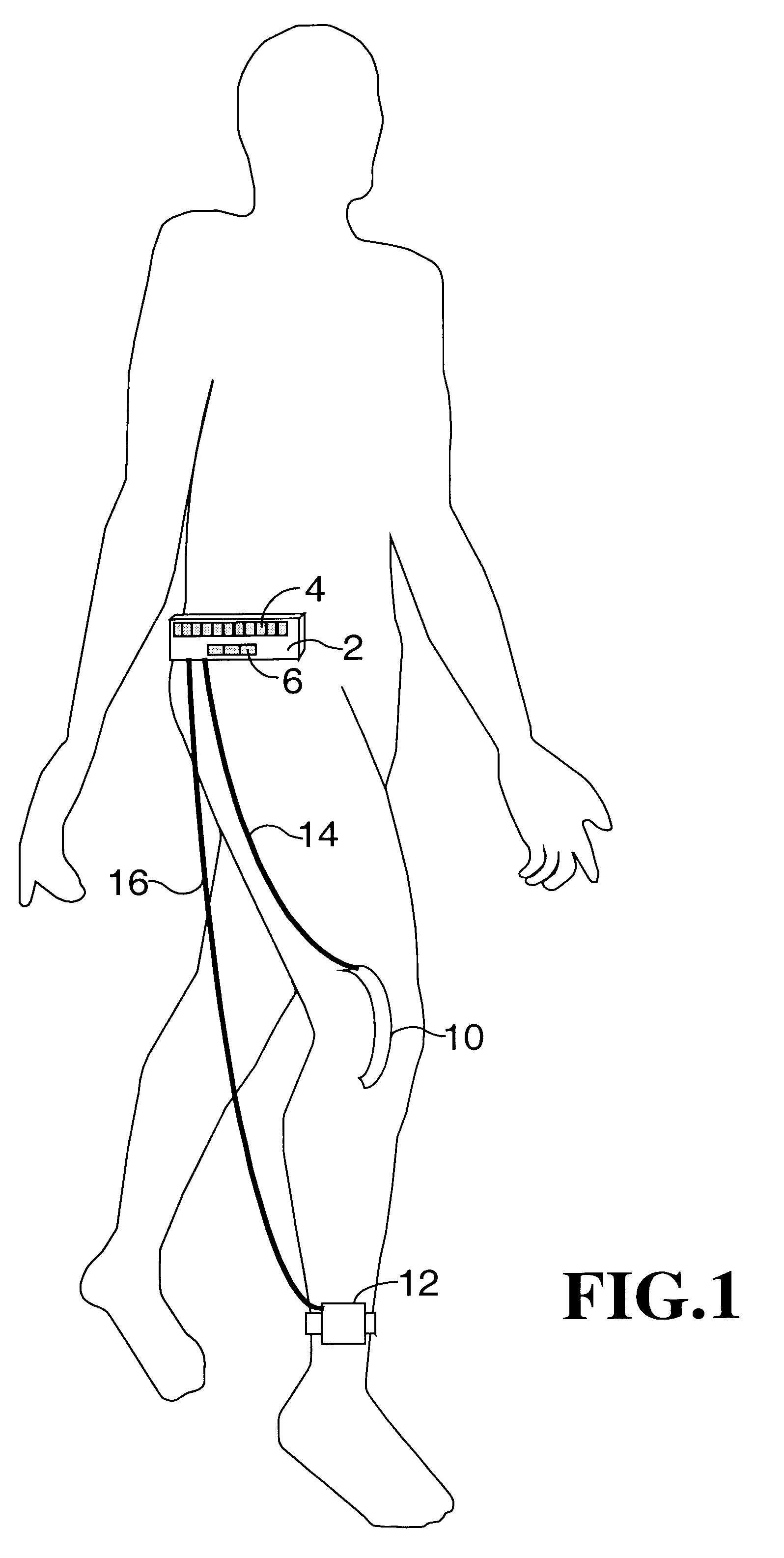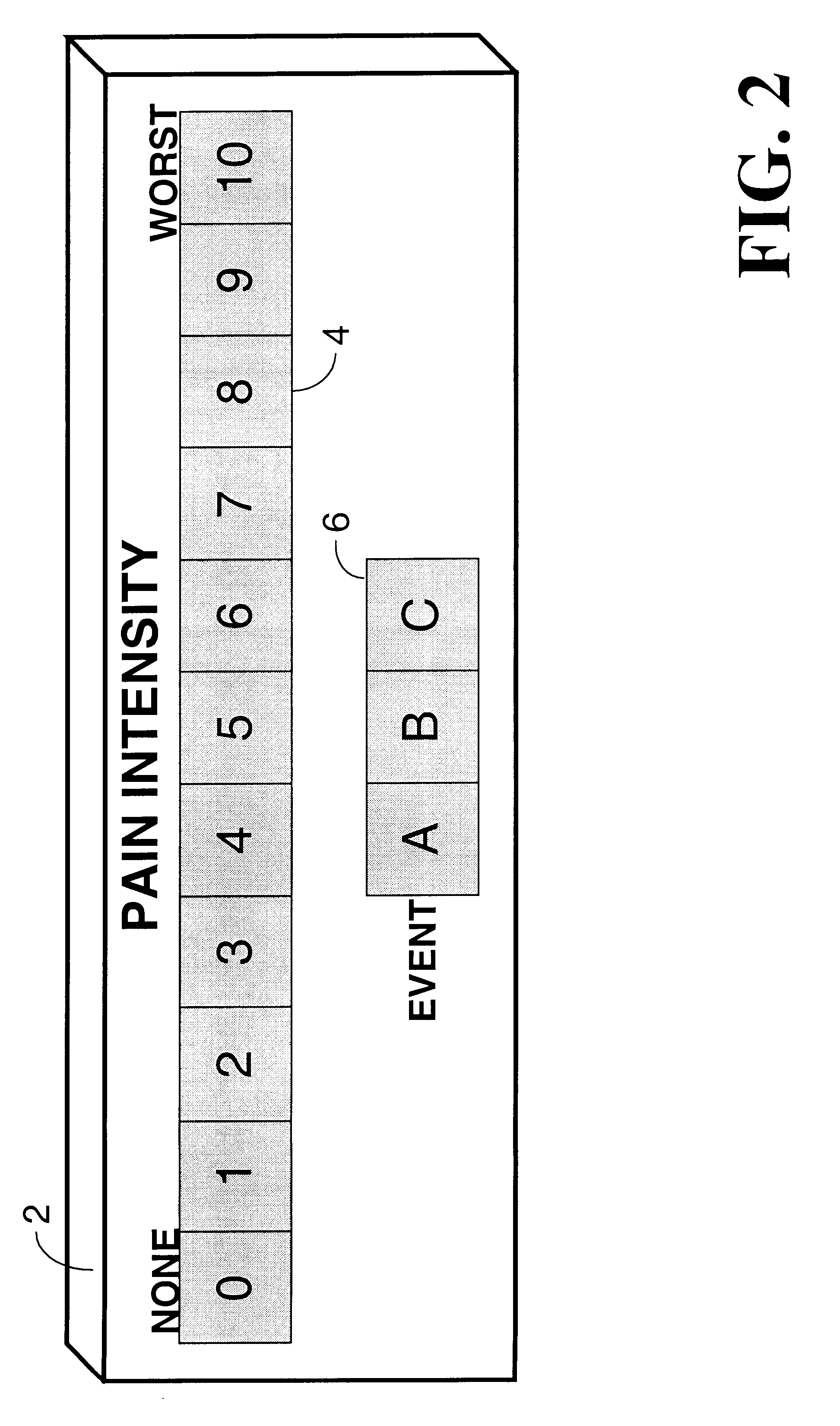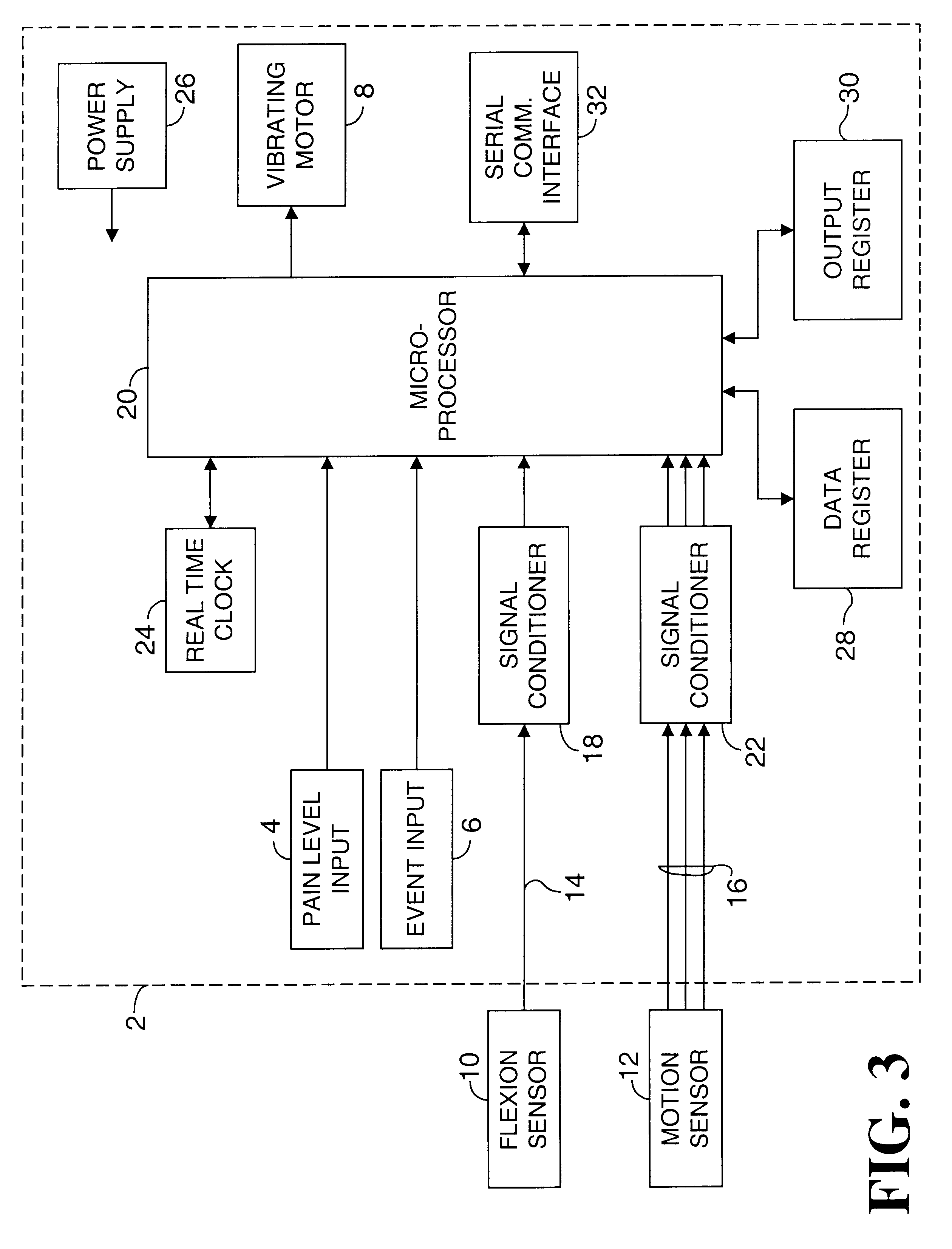Apparatus and method for relating pain and activity of a patient
a technology of pain and activity, applied in the field of apparatus and methods for relating pain and activity of patients, can solve the problems of no known apparatus or methods, no means to quantitatively measure the activity level of an orthopedic patient, and no direct measurement of these parameters
- Summary
- Abstract
- Description
- Claims
- Application Information
AI Technical Summary
Problems solved by technology
Method used
Image
Examples
Embodiment Construction
The embodiment illustrated is not intended to be exhaustive or limit the invention to the precise form disclosed. It is chosen and described in order to explain the principles of the invention and its application and practical use, and thereby enable others skilled in the art to utilize the invention.
FIG. 1 depicts the invention applied to characterize activity involving the knee joint of a patient and to relate this characterized activity to pain associated with the knee joint. The invention includes a computing unit 2, which may be worn or carried by a patient. Integral to computing unit 2 is a pain level input 4 and an event input 6.
Pain level input 4 allows the patient to indicate the level of pain associated with the joint for which the pain and activity is to be related. In the preferred embodiment pain input 4 is a zero-to-ten scale of pain intensity and is comprised of eleven 1 cm by 1 cm membrane switches arranged in a row labeled 0 to 10. The patient is instructed to rate ...
PUM
 Login to View More
Login to View More Abstract
Description
Claims
Application Information
 Login to View More
Login to View More - R&D
- Intellectual Property
- Life Sciences
- Materials
- Tech Scout
- Unparalleled Data Quality
- Higher Quality Content
- 60% Fewer Hallucinations
Browse by: Latest US Patents, China's latest patents, Technical Efficacy Thesaurus, Application Domain, Technology Topic, Popular Technical Reports.
© 2025 PatSnap. All rights reserved.Legal|Privacy policy|Modern Slavery Act Transparency Statement|Sitemap|About US| Contact US: help@patsnap.com



